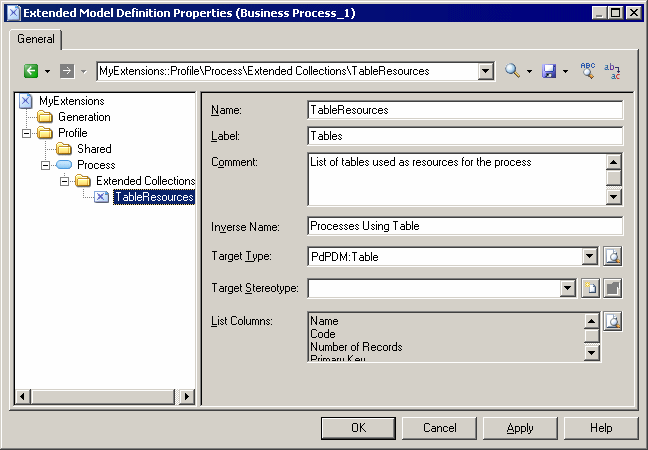Extended collections define the possibility to associate an object instance with a group of other objects of the specified type. Extended compositions define a parent-child connection between an object instance and a group of sub-objects derived from the ExtendedSubObject metaclass.
For extended collections, the association between the parent and child objects is relatively weak, so that if you copy or move the parent object, the related objects are not copied or moved, but the connection is maintained (using shortcuts if necessary). For example, you could associate documents containing use case specifications with the different packages of a model by creating an extended collection under the Package metaclass and specifying FileObject as the target metaclass.
For extended compositions, the association is stronger. Sub-objects can only be created within the parent object and are moved, copied, and/or deleted along with their parent.
The collection or composition is displayed as a new tab in the object instance property sheet. The property sheets of objects referenced in a collection show the object instance owning the collection on their Dependencies tab.
